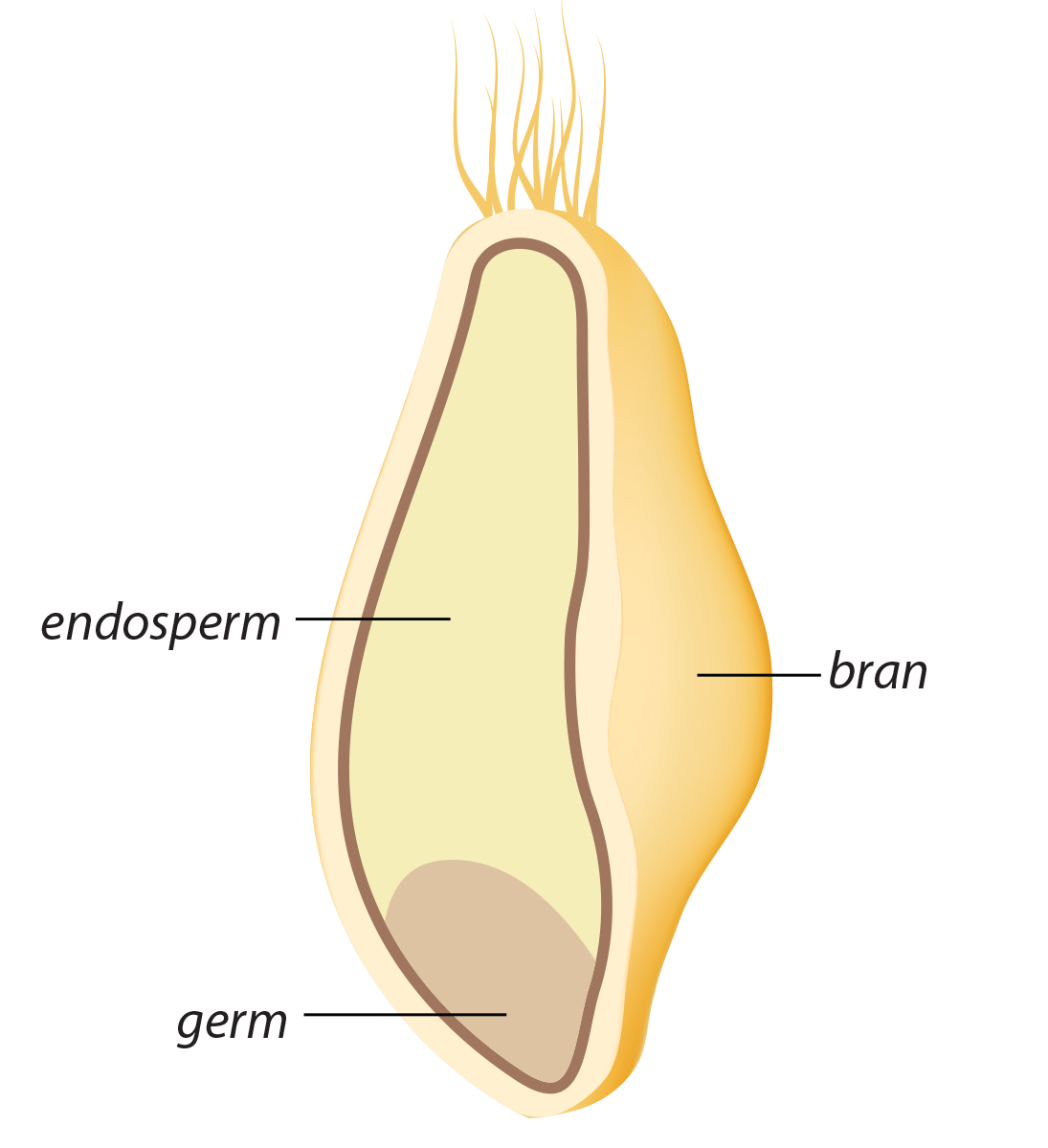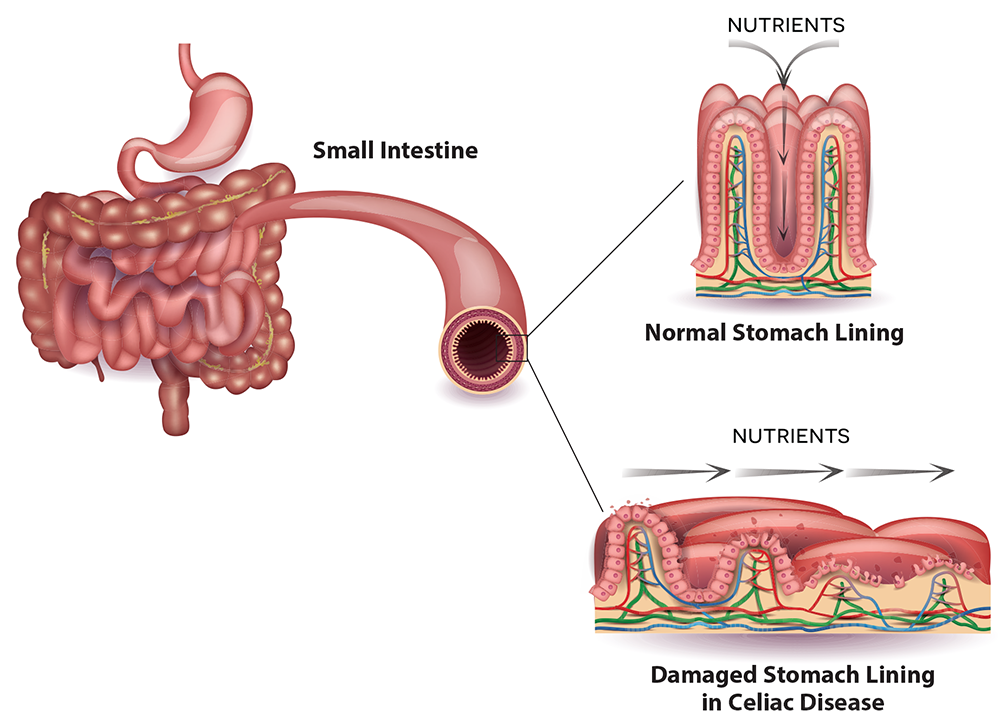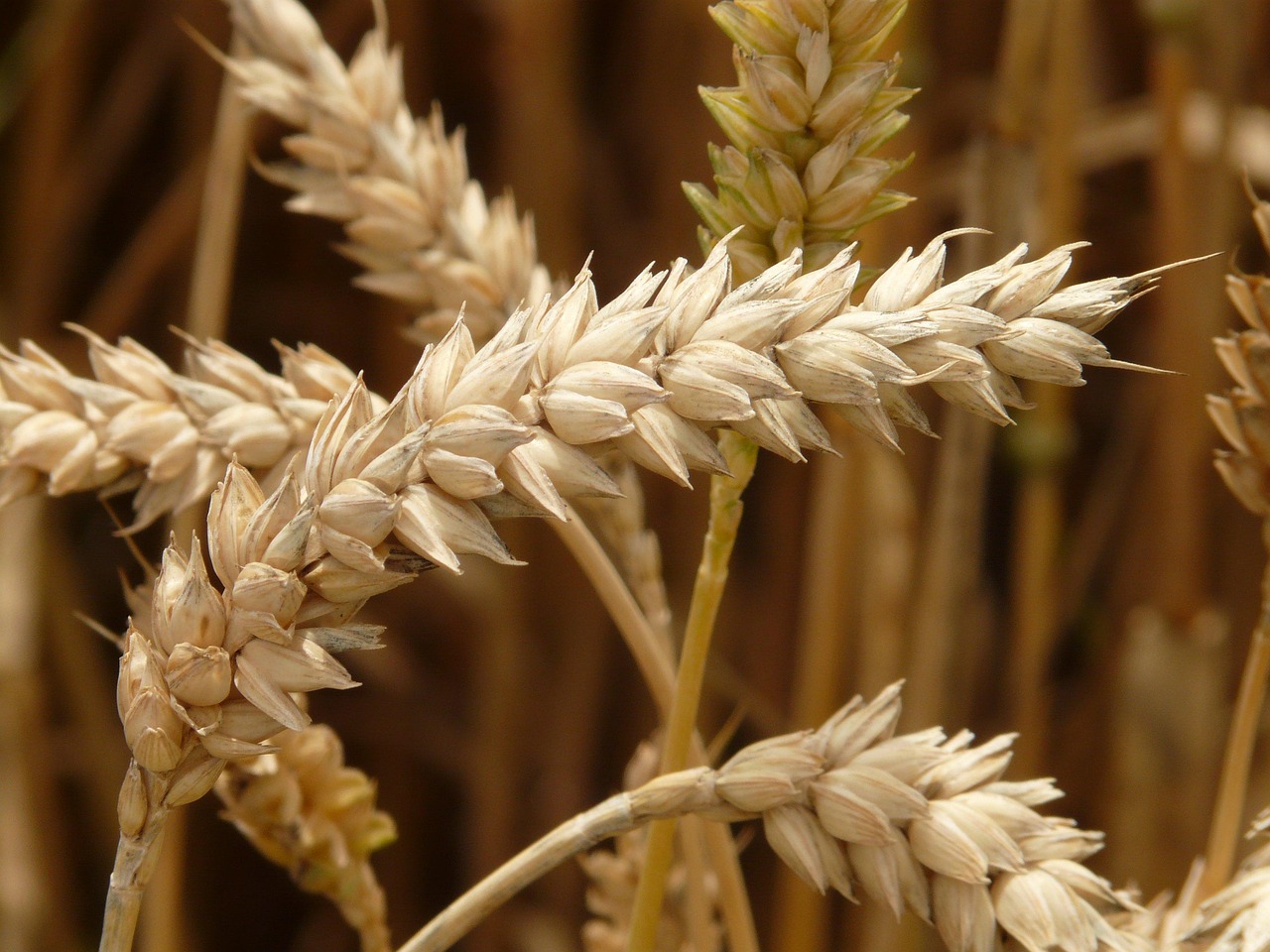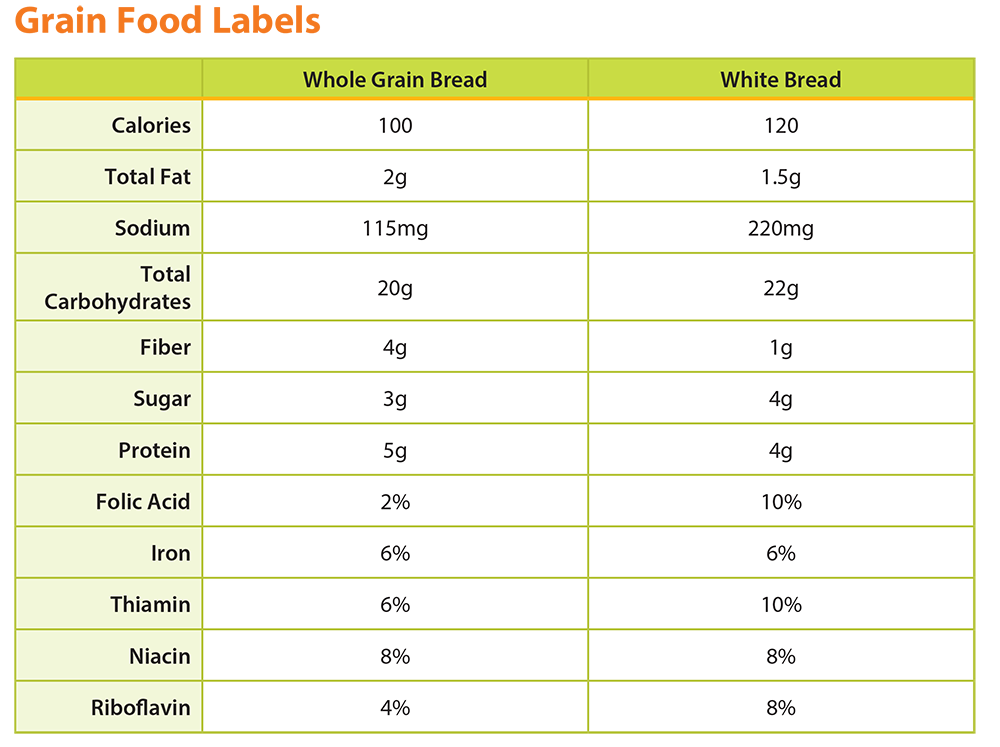Whole grains have three parts called the bran, endosperm, and germ. The bran is the outer layer of the kernel. It contains antioxidants, B vitamins, and fiber. The germ is the embryo, which can be used to sprout a new plant. It contains B vitamins, some protein, minerals, and healthy fats. The endosperm is the food supply for the germ. It is the largest portion of the kernel and contains carbohydrates (starches), protein, and some vitamins and minerals. If grains are not whole, they have been refined. This process strips the kernel of the bran and germ to extend shelf life. This process removes many of the nutritional benefits, including the antioxidants.

Iodine can be used to detect starch. The iodine molecule moves inside the starch chain, producing a deep blue color. More specifically, when an iodine solution is diluted with water, the iodine atoms are arranged in a random order within the liquid. This random distribution produces a light yellow color. When the iodine solution comes into contact with starch (long chain carbohydrates), the iodine atoms organize into a non-random arrangement, and turn blue. This blue color indicates that starch is present. However, when starch is broken down further into simple carbohydrates (no longer starch), the iodine molecules arrange in a random order again, producing the light yellow color.
Gluten is a protein found in wheat, barley, and rye that provides structure in baked products. Gluten is a linkage between the proteins glutenin and gliadin. Gluten develops through the formation of these bonds by the addition of water and manipulation (e.g. kneading). In general, flours with higher gluten content are high protein flours, and those with lower gluten content are low protein flours. High protein flours are used to make foods like bread and pasta, while weak/low protein flours are used to make foods like cake and pastries. Besides the type of flour, gluten strength can be controlled by manipulating the dough manually or by adding other substances to the dough. For example:
- Kneading the dough strengthens and organizes the gluten mesh. Folding, pressing, and stretching dough until it has reached the desired form is called kneading
- Adding salt also greatly strengthens the gluten mesh
- Adding sugar limits the development of gluten
- Adding acids weakens the gluten mesh
- Adding fats weakens the gluten
Each of the treatments above can be used to make different foods. For example, you knead and manipulate the dough much longer when making pizza crust as opposed to the time you would take to make a cake batter. The more you knead or stir the mixture, the more the gluten develops. This leads to stronger bonds and structure.
The protein gluten may be harmful to some. Individuals who have Celiac disease are allergic to gluten. When consumed, the gluten will cause an auto-immune response in the small intestine, leading to inflammation. The inflammation causes damage to the lining of the small intestine. The provided graphic below provides a visual of the damage caused to the intestinal epithelial cells of someone with Celiac disease. This will prevent absorption of some nutrients. If left untreated, it can cause developmental problems in children due to the nutrient deprivation. Individuals with Celiac disease must consume a gluten-free diet to avoid gastric distress and malabsorption. Celiac disease is not the only cause of gluten-related reactions. Individuals can also have non-celiac gluten sensitivity (NCGS). NCGS can cause similar symptoms as Celiac disease; however, an auto-immune response is not triggered and intestinal damage is not caused. Recent research has identified Fermentable Oligosaccharides, Disaccharides, Monosaccharides And Polyols (FODMAPs), a group of poorly digested carbohydrates, as a possible cause of the NCGS-type symptoms such as bloating, diarrhea or constipation. 
Amylose and amylopectin are the common starch molecules found in food. Amylopectin forms a long, branched chain, while amylose forms a long, straight chain, making it easier to digest. Amylase is the enzyme our bodies use to break down amylose. The diagram at the beginning of the student lab investigation displays this relationship pictorially. Amylose undergoes hydrolysis (addition of a water molecule) in the presence of the enzyme amylase. This reaction causes the amylose chain, a complex carbohydrate (polysaccharide), to breakdown into smaller units known as simple carbohydrates (disaccharides followed by monosaccharides). As mentioned above, starch is a polysaccharide. All starches are considered carbohydrates, but not all carbohydrates are starches. Iodine will detect starch molecules. Therefore, a positive test will result when the iodine solution comes into contact with bread or other starchy foods (e.g. potatoes). However, once amylase has had time to break down the starch molecules, the iodine solution will no longer detect starch. This is because, amylose is broken down by amylase into simple carbohydrate molecules that are no longer complex, like starch molecules.
FoodMASTER Middle Lessons
FoodMASTER (Food, Math and Science Teaching Enhancement Resource) is a compilation of programs aimed at using food as a tool to teach mathematics and science. For more information see the Background & Introduction to FoodMASTER for Middle School. This lesson is one in a series of lessons designed for middle school:



